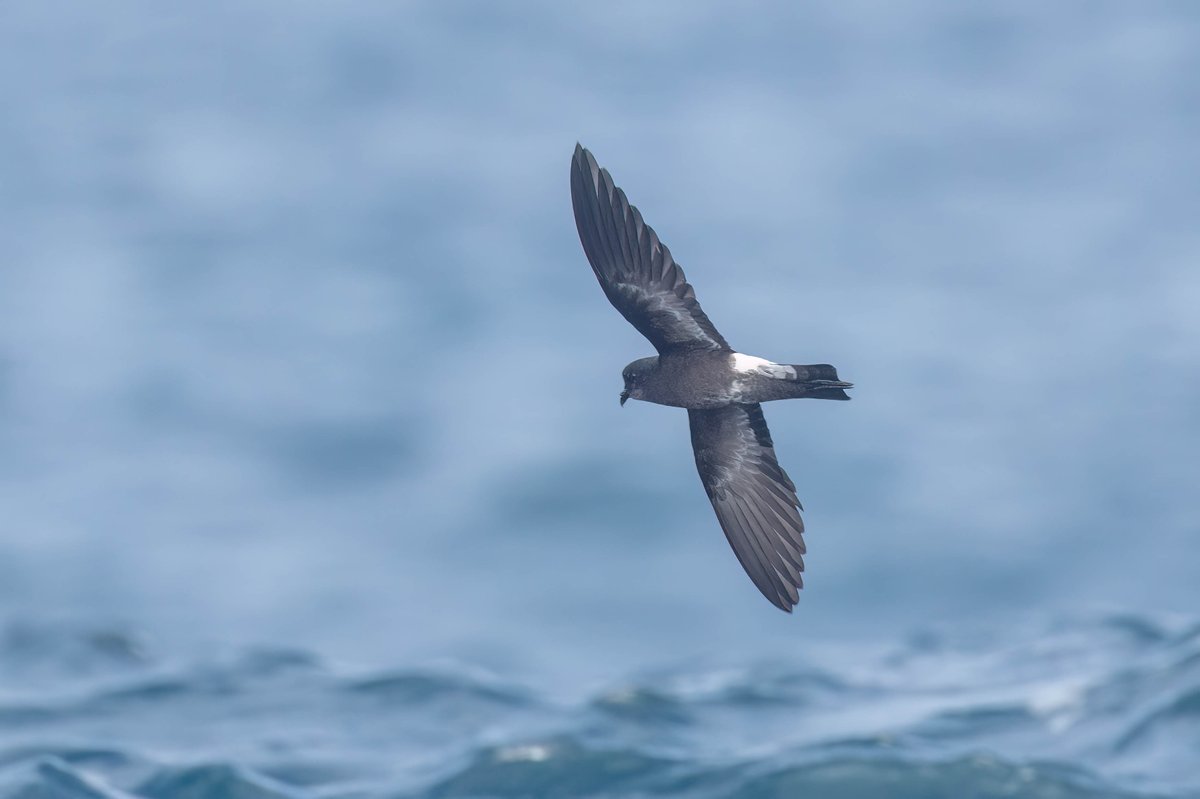Science
Related: About this forumOrnithologists Discover New Species of Storm Petrel
Aug 12, 2024 by Enrico de Lazaro
An international team of ornithologists has described a cryptic new species of the bird genus Oceanites from Chile.

The Andean storm-petrel (Oceanites barrosi). Image credit: Norambuena et al., doi: 10.11646/zootaxa.5486.4.1.
Oceanites is a small genus of seabirds in the family Oceanitidae, which includes all the small storm petrels of the southern hemisphere.
“The family Oceanitidae is comprised of storm-petrels that have their phylogeographic origin in the southern hemisphere, including 10 species among the genera Oceanites, Garrodia, Pelagodroma, Fregetta, and Nesofregetta,” said Universidad Santo Tomás paleontologist Heraldo Norambuena and colleagues.
“The at-sea distribution of this family includes tropical, temperate, subantarctic, and Antarctic seas in the southern hemisphere, including temperate waters of the North Atlantic.”
More:
https://pbs.twimg.comhttps://www.sci.news/biology/oceanites-barrosi-13170.html




~ ~ ~
SOUTH AMERICA'S OTHERWORLDLY SEABIRD
To save the tiny seabird, scientists are venturing to its secret home in the Atacama Desert—and sticking their noses into a lot of stinky holes in the ground.
By Sarah Gilman
JULY 20, 2018
The peninsula northwest of the industrial city of Antofagasta, on Chile’s northern desert coast, is haloed with seabirds in flight. Pelicans lumber past wheeling gulls. Flocks of boobies cut the haze around Punta Tetas—Tits Point—like an avian punch line.
Farther from shore, where the inappropriately named Pacific begins its wild pitch and yaw, is the domain of the order Procellariiformes: birds with long, hooked bills and tubular nostrils that spend most of their lives above the open ocean. The largest of these are the albatrosses, soarers with severe brows and stiff, straight wings that span several feet. The smallest—small enough to hold in one hand—are the storm petrels. Most of the storm petrels that ply the air off this coast are brownish black, with crescents of lighter feathers across their shoulders and the erratic flight patterns of a bat. When they drop to the water’s surface to dip mouthfuls of food, they seem to run across it. This habit inspired the name of the birds’ original taxonomic family, recently split into two: Hydrobatidae, meaning “water walkers.”
The Spanish name for storm petrels is golondrinas de mar, or golondrinas de la tempestad—“swallows of sea,” “swallows of storm.” Sailors of old thought they heralded bad weather, and called them “Mother Carey’s chickens,” emissaries carrying warnings from the Virgin Mary or ship-sinking gales from darker spirits.
Among these far-flying little birds, one can be particularly difficult to find: the ringed storm petrel, or Oceanodroma hornbyi. It has dark wings with white half-moons, like the other petrels here, but its face and belly flicker bright white, and it sports a collar and a rakish masked cap of dark gray. While the other storm petrels seem abundant, the ringed arrives alone, and is gone quickly: a dipping turn like a wink, then away. It rarely appears less than 30 miles from shore, and ranges 300 miles farther out, where gossamer flying fish launch from wave faces like butterflies and the seafloor plunges thousands of feet.
More:
https://www.theatlantic.com/science/archive/2018/07/storm-petrel-secret-desert-habitat-nests/563687/